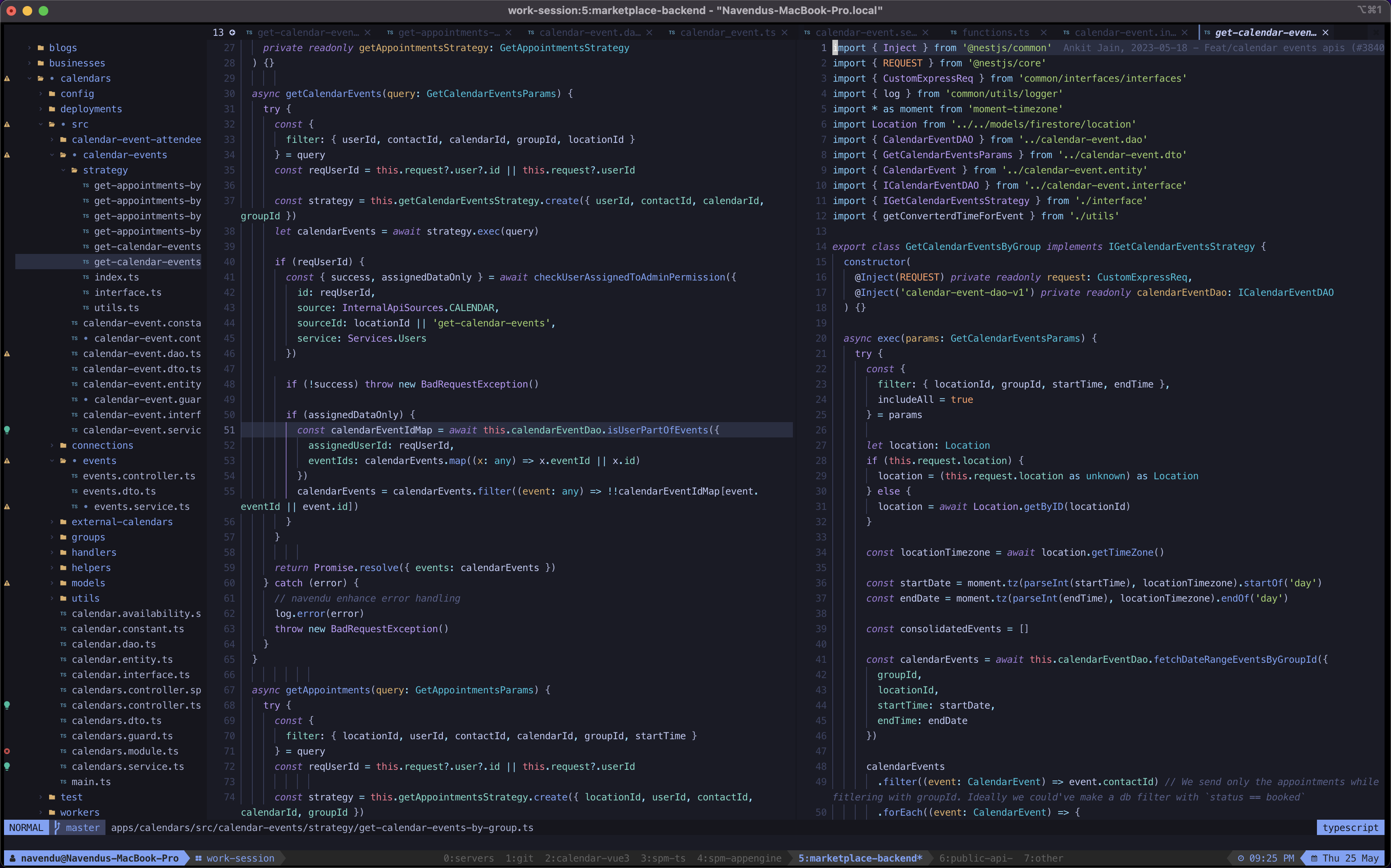Introduction
In a world where the majority of people opt for VScode, I stand out as someone who chooses neovim as my primary IDE. The ongoing debates and comparisons between VScode and neovim often revolve around determining which one is the superior IDE. However, I firmly believe that both have their own strengths and weaknesses, and the choice ultimately depends on the individual’s preferences and requirements. In this post, I will outline several reasons why I personally prefer neovim over other IDEs.
Streamlined Workflow
The main reason why I prefer neovim is its seamless integration into my workflow. In a typical work setup, I often have around five different codebases open simultaneously, run about four local servers in separate terminals, and utilize tmux to organize everything within a single screen. This aspect of my workflow still amuses me.
I’ve observed that some people tend to have multiple instances of vscode for different codebases and multiple terminal instances for various servers. As a result, their application windows are scattered across multiple screens, leading to confusion and difficulties in locating specific codebases or terminals where certain servers were running.
With neovim and tmux, I can have everything consolidated within a single screen, allowing me to easily navigate and locate what I need with a simple key combination. This consolidated view helps me stay organized and boosts my productivity.
Keyboard-Centric Approach
Another compelling reason for my preference for neovim is its avoidance of mouse or touchpad usage. While some may consider this a limitation, I perceive it as a positive aspect that helps reduce dependency on additional input devices when interacting with the computer.
By solely relying on the keyboard for navigation and commands, I experience a reduction in hand movement, resulting in saved time that would otherwise be spent traveling between the keyboard and the mouse or touchpad.
Furthermore, this keyboard-centric approach enhances my touch-typing skills, serving as a valuable meta-skill that contributes to my overall productivity.
Game-Like Controls
One of my personal favorite aspects of neovim is its game-like controls. The commands in neovim follow a modular structure, allowing you to combine them in various ways, much like executing combos in a game.
To illustrate this, let’s take the example of playing GTA. In GTA, you use specific controls to perform actions such as moving the character (w-forward, s-backward, a-left, d-right), jumping (space), opening a car’s door (f), and activating cheat codes like becoming invincible (PAINKILLER) or acquiring all weapons (TOOLUP).
Similarly, in neovim, the commands are structured in two, three, or four parts. One common three-part structure consists of an operator, a text object, and a motion. Operators can be delete, change, visual select, or replace. Text objects can be inside or around. Here are some examples of motions and their corresponding keys:
| Motion | Key |
|---|---|
| Move by word | w |
| Move by block (of parentheses) | b or ( |
| Move by single quotes | ’ |
| Move by sentence | s |
Using these components, you can create powerful commands. For instance:
- di’ - delete inside the ‘single quotes’
- da” - delete around the “double quotes”
- ci[ - change inside the [square brackets]
These game-like controls not only make neovim more enjoyable to use but also enhance productivity by allowing for quick and efficient text manipulation.
Personalizations/Custimizations
One of the primary reasons neovim is highly regarded is its extensive customizability. With neovim, I have the freedom to customize every aspect according to my preferences. Whether it’s the visual appearance, keybindings, or the integration of additional plugins for enhanced functionality, neovim allows me to tailor it to my exact needs. Unlike other IDEs, neovim only does what I explicitly instruct it to do, without any unnecessary add-ons or bloat.
This level of customization empowers me to create a personalized IDE that aligns perfectly with my workflow and coding style. It provides me with a deep understanding of how my IDE operates, giving me full control and enabling me to optimize my coding experience.
Conclusion
While neovim may have a steep learning curve, investing time and effort to master it is truly worthwhile due to the immense benefits it provides in the long run. Neovim has seamlessly integrated into my workflow, offering remarkable advantages that I aim to highlight in this post. The primary goal is to inspire readers to explore neovim and experience its invaluable benefits firsthand. While customization details will be covered in a future post, this article serves as an introduction and motivation for embracing neovim as a valuable tool in their own development journey.

